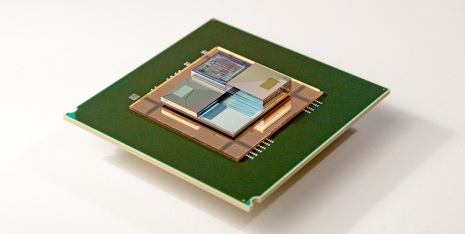(Source: ETH Zurich, as published by >>>https://3dprint.com) – By Sarah Saunders – Zurich Researchers Build Tiny Redox Flow Battery, Supplied with Electrolytes Thanks to 3D Printing
Scientists and researchers from ETH Zurich and IBM Research Zurich have built an extremely small redox flow battery – it’s only around 1.5mm thick, and can potentially provide energy to tightly packed electronic components, while at the same time dissipating the heat that’s produced by these components. Redox means reduction-oxidation, and the redox flow battery is rechargeable, thanks to two chemical components that are dissolved in liquids that are contained inside the battery system, and separated by a thin membrane. 3D printing technology was used to keep the batteries efficiently supplied with electrolytes.
Conventional batteries store energy in two fixed electrodes, but flow batteries store it in two liquid electrolytes, and it’s pumped into the battery through two circuits. Electrochemical reactions convert a battery’s energy from its stored chemical form into electricity. Flow batteries can convert chemical energy into electrical energy and vice versa, but fuel cells can only convert one direction, chemical into electrical, and not both. Flow batteries are also lighter than regular batteries – while regular batteries are heavier depending on how much energy, or fuel, is stored inside, flow batteries can get fuel from outside and don’t have to store it. The only problem is that flow batteries need a liquid supply system.
The work by IBM Research Zurich and ETH Zurich, the latter of which introduced a method for metal 3D printing on a nano level last year, was outlined in a research paper, titled “3D-printed fluidic networks for high-power-density heat-managing miniaturized redox flow batteries,” and published in Energy & Environmental Science; co-authors on the paper were Lorenz Brenner, Neil Ebejer, Julian Marschewski, Bruno Michel, Dimos Poulikakos, and Patrick Ruch. The tiny redox flow battery that the researchers constructed means that future computer chip stacks could not only receive electrical power, but also be cooled at the same time – basically, an electrochemical reaction produces electricity using two liquid electrolytes, “pumped to the battery cell from outside via a closed electrolyte loop.” (…)
READ FULL ARTICLE >>> https://3dprint.com/168378/tiny-redow-flow-battery-zurich/
Image Credit >>> Three-dimensional chip stacks could be used in computers in the future. Integrated microscale flow batteries could both power and cool them © IBM Research Zurich (as published in the above-mentionned internet source)









